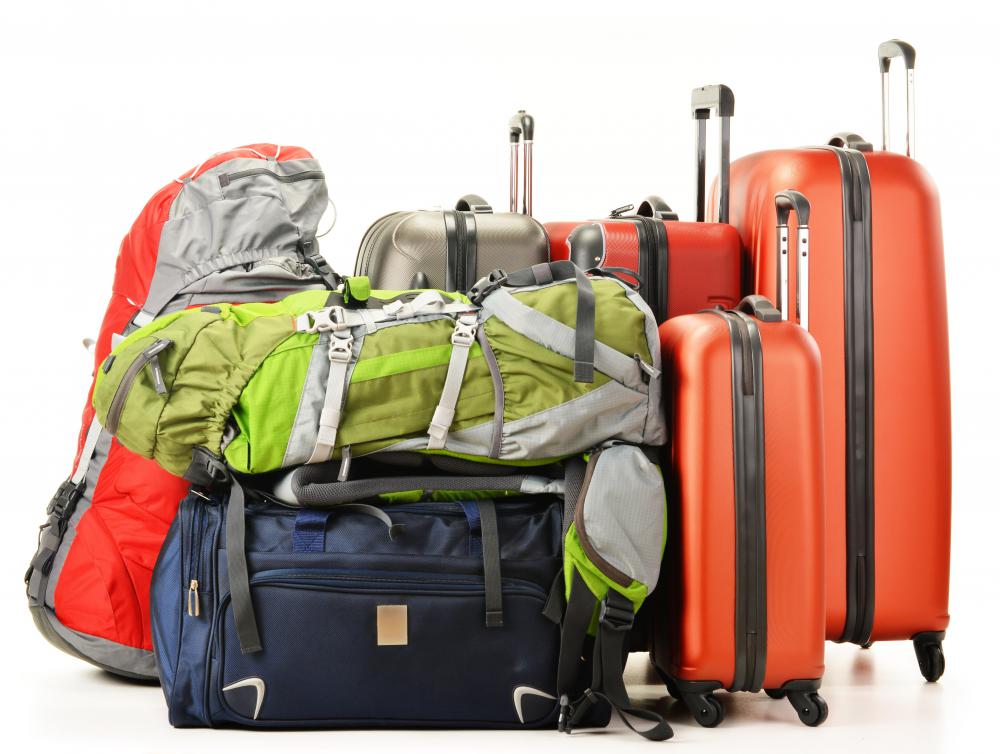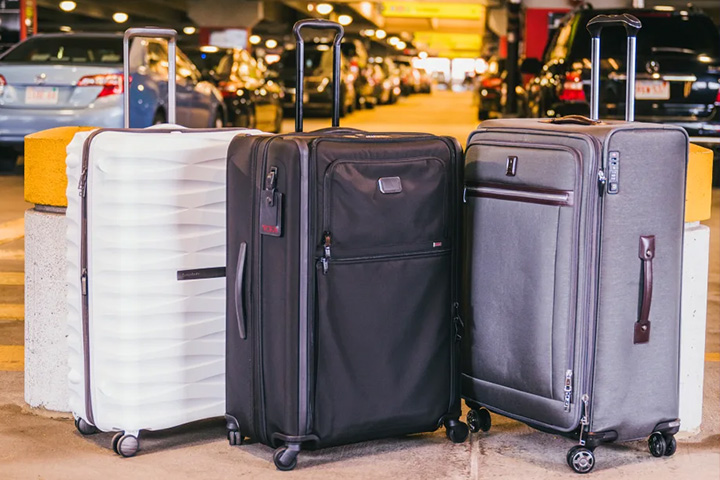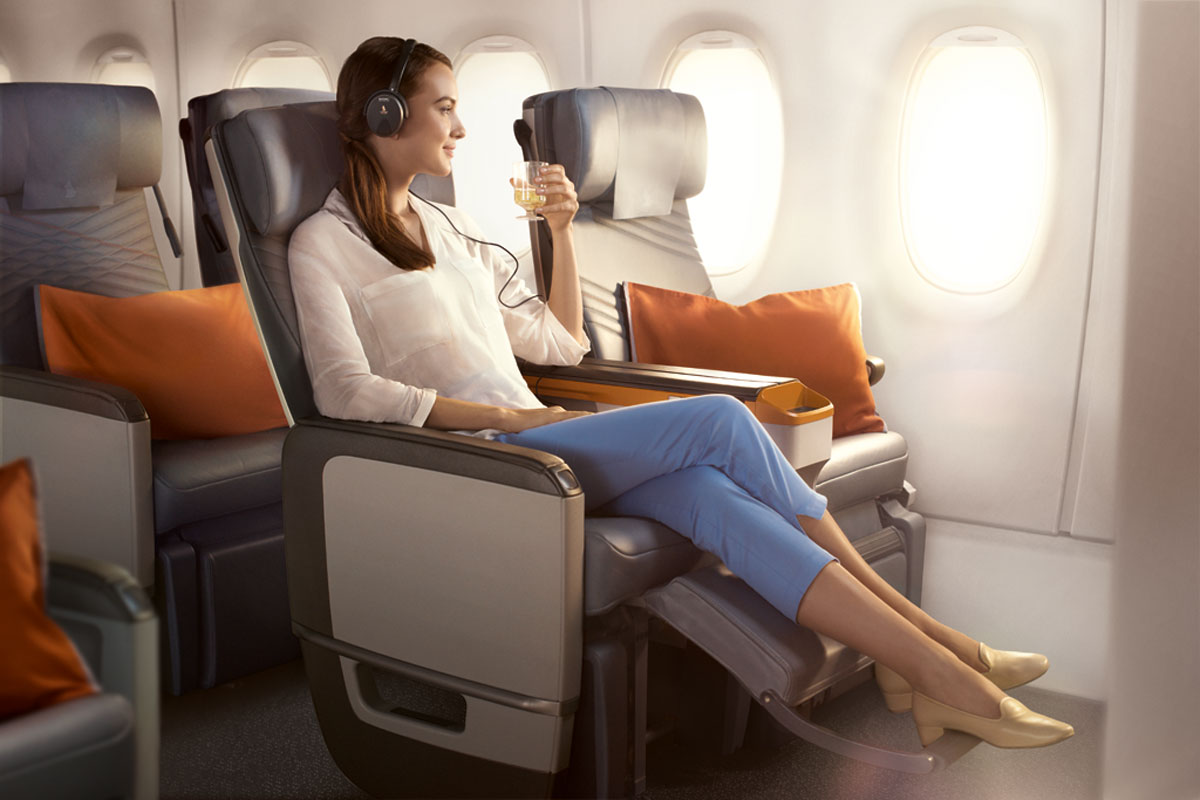Traveling is wonderful, but let’s be honest, it can also be stressful. Choosing the right suitcase is an essential part of preparing for any trip. Whether you are embarking on a weekend getaway or heading out on a month-long vacation, having a reliable and functional piece of luggage can make all the difference. Here are some of the key factors to consider when selecting the perfect suitcase for your needs.
To begin, it’s crucial to consider the size and weight restrictions imposed by airlines, as well as your own preferences and travel requirements. Factors like the duration of your trip, the types of items you plan to pack, and the mode of transportation should all play a role in determining the most suitable luggage size. Keep in mind the ever-evolving airline luggage regulations, which can impact the dimensions and weight allowed for both checked bags and carry-ons.
Another important aspect to consider is the suitcase’s construction and design features, such as the type of materials, wheel system, and handle design, which can significantly affect its durability and ease of use. Furthermore, consider security features like built-in locks, zippers, and compartments to protect your belongings during transit. Consumer Reports. A key factor in your choice is how much you are willing to spend. We recommend that you consider this an investment. Nothing is worse than a broken handle or the contents of your suitcase spilling out for everyone to see right at the beginning of your vacation. By carefully weighing these factors, you’ll be well-equipped to select a suitcase that meets your unique travel requirements.
Understanding Your Travel Needs
Consider the destination and the activities you have planned. For example, if you are going on an adventure vacation with hikes and outdoor activities, you would want luggage that is durable and ergonomic to carry. On the other hand, if your vacation plan involves staying at a luxurious hotel, a well-organized suitcase with conveniences like easy-access compartments would be more appropriate.
Factor in the duration of your trip, as this will determine the size and capacity of the luggage needed. Additionally, think about the mode of transportation you will be using: frequent air travelers must consider luggage restrictions imposed by airlines, while those traveling by car or train can be more flexible. Here’s a quick checklist to guide your decision:
- Destination: Urban or remote?
- Duration: Short or long stay?
- Transportation: Air, train, or car?
- Activities: Business, leisure, or adventure?
Another important aspect to consider is the level of organization and convenience you expect from your suitcase. Different luggage options offer varying degrees of internal organization, as well as external compartments for easy access during your travels. Light packers who prefer minimalistic designs may lean toward simpler models, while those with more complex packing habits may appreciate luggage with additional pockets and compartments.
Finally, always take into account personal preferences and individual needs. Some travelers prioritize style and aesthetics, while others consider functionality as the primary factor. Your choice of suitcase should ultimately reflect your unique travel experience and preferences to ensure a comfortable and enjoyable journey.
Choosing the Type of Suitcase
Hard-Sided vs Soft-Sided
When deciding between a hard-sided and soft-sided suitcase, it’s crucial to consider the needs of your travel. Hard-sided suitcases are typically more robust, with a watertight construction and solid exterior. They are ideal for protecting fragile items and can withstand rough handling during transport. On the other hand, soft-sided suitcases have a flexible exterior, allowing for easier storage in tight spaces like car trunks or overhead compartments. They are also lightweight and often come with external pockets for organization.
Carry-On vs Checked Luggage
It’s essential to choose between carry-on and checked luggage based on your travel needs and airline restrictions. Carry-on luggage is limited in size, usually no larger than 45 inches (length + width + height), according to Travel Fashion Girl. This option is perfect for short trips or light packers, allowing you to avoid baggage claims and additional fees. Checked luggage, on the other hand, is more suitable for longer trips or heavy packers, with a standard size limit of 62 inches for most US airlines. Keep in mind that checked bags might be subject to additional fees, damage, or loss during transit.
Duffel Bags vs Backpacks vs Suitcases
Travelers have various luggage options, including duffel bags, backpacks, and suitcases:
- Duffel bags are versatile, lightweight, and often have the option to be used as carry-on luggage. They’re easy to store when not in use but have minimal organization options and require more physical effort to carry around compared to suitcases.
- Backpacks are ergonomically designed for extended periods of carrying. They’re perfect for adventure travelers or those who prefer hands-free mobility. However, they may not offer the same level of protection for fragile items as hardshell suitcases.
- Suitcases, both hard-sided and soft-sided, are famous for their durability, security features, and organization options. They typically come with wheels for easy maneuvering but can be challenging to manage on uneven terrain or in crowded spaces.
When choosing your ideal travel luggage, consider factors like durability, mobility, and the type of items you’ll be carrying. Opt for the luggage option that best complements your travel needs and preferences.
Optimal Suitcase Size and Weight
Selecting the right suitcase size and weight primarily depends on your travel needs and airline restrictions. Airlines have varying size and weight limits for both carry-on and checked luggage. It is essential to consider these restrictions while choosing your suitcase to avoid extra charges at the airport.
A carry-on size typically ranges from 18 to 22 inches in height and must be lightweight enough to comply with the airline’s weight limits. For most airlines, the maximum dimensions allowed for a carry-on bag are 22″ x 14″ x 9.” Additionally, make sure to check your airline’s specific weight limit for carry-on luggage before making a purchase.
When it comes to checked luggage, the most popular size is between 25 and 29 inches in height and various widths. Medium-sized checked suitcases, measuring around 25-26″ in height and 18″ in width, usually hold enough items for a week-long getaway. For illustration, refer to this luggage sizing chart for more detail.
Regarding weight, it is essential to factor in the suitcase’s weight itself, as well as the anticipated weight of its contents. Take note that airlines may impose weight limits for checked luggage, usually around 50 pounds for domestic flights and up to 70 pounds for international flights. Keep in mind that these limits vary depending on the air carrier’s policies and class of service.
Moreover, here are a few points to consider while deciding on the optimal suitcase size and weight:
- Trip duration: Shorter trips require smaller luggage, while longer trips typically need roomier suitcases.
- Ease of handling: Think about your ability to comfortably carry and navigate your suitcase through airports, train stations, or busy streets.
- Personal packing habits: Analyze your packing tendencies, such as traveling light or needing extra space for souvenirs. You may want to select a suitcase catering to your specific requirements.
In conclusion, carefully evaluate your travel needs and pick the optimal suitcase size and weight based on these factors. Also, make sure to comply with airline restrictions to ensure a smooth and stress-free travel experience.
Examining Suitcase Material and Durability
Material Types
When selecting a suitcase, it’s essential to consider the material used in its construction. The two primary materials for suitcases are hard-shell and soft-shell. Hard-shell suitcases are typically made from plastic, aluminum, or polycarbonate, with polycarbonate being the most popular choice due to its lightweight and durable properties. On the other hand, soft-shell suitcases are usually made from strong fabrics like nylon or canvas. Please be aware that aluminum cases, whilst durable, will dint over time.
A helpful metric to consider for soft-shell suitcases is the denier rating. This measure reflects the fabric’s thickness; higher denier values indicate more durable fabric. For example, ballistic nylon is known for its high durability and is often used in luggage construction. As a general guideline, look for a denier rating of at least 600 for a strong and reliable soft-shell suitcase.
Water-Resistance Rating
The materials used in a suitcase can also affect its ability to resist water. Water-resistant materials can withstand some moisture but are not fully waterproof. Hard-shell suitcases, especially those made from polycarbonate, generally have better water resistance than their soft-shell counterparts.
Soft-shell suitcases are often made from woven nylon, which may have a water-resistant coating applied. To judge the water resistance of a soft-shell suitcase, it’s essential to examine its construction, including the quality of the zippers and seams. Choosing luggage with tight, well-made seams and water-resistant zippers can significantly enhance its ability to keep your belongings protected from moisture. However, do note that even with these precautions, soft-shell suitcases may not be fully waterproof.
By considering these factors when evaluating suitcase material and durability, travelers can make an informed choice about the luggage that best suits their needs.
Assessing Design and Functionality
When choosing the right suitcase, it’s essential to evaluate its design and functionality. This section will focus on the features of wheels and handles, as well as storage and organization aspects, to help you make an informed decision.
Wheels and Handle Features
The wheels of a suitcase play a crucial role in its maneuverability and ease of transport. Suitcases typically come with either two wheels or four wheels. Two-wheeled suitcases, often equipped with inline skate wheels, are more rugged and suitable for bumpy terrain but may require more effort to maneuver in tight spaces. On the other hand, four-wheeled suitcases, also known as spinners, offer 360-degree rotation and effortless gliding, making them ideal for smooth surfaces and maneuvering in crowded spaces.
The handles on your suitcase also contribute to its overall usability. Most suitcases come with telescoping handles that can be adjusted to different heights, ensuring a comfortable grip for users of various heights. Additionally, look for suitcases with sturdy, well-designed side and top handles for easy lifting.
Storage and Organization
A well-designed suitcase should offer ample storage space and be equipped with a variety of organizational features to keep your belongings secure and tidy. Consider the following aspects when evaluating the storage and organization options:
- Compartments: Suitcases should have a main compartment for your larger items, like clothing and shoes, and potentially separate compartments for delicate or easily wrinkled items.
- External pockets: These are useful for quick access to items such as passports, travel documents, and electronics. Look for suitcases with multiple external pockets for optimal organization.
- Internal organization features: Suitcases with built-in organizational features, like mesh dividers and zippered pockets, will make packing and locating items much easier.
By carefully assessing the design, wheels, handle features, compartments, and organization aspects of a suitcase, you can find the perfect luggage to meet your travel needs and ensure a hassle-free journey.
Security Features of Suitcases
When choosing a suitcase, considering its various security features is essential to keep your belongings safe during your travels. There are several key factors to look for in a suitcase to provide the peace of mind you need while traveling.
Zipper Quality: There are two main types of zippers found in suitcases: coil zippers and chain zippers. Chain zippers tend to be more durable and secure, making them a better choice for a travel suitcase.
Locks: A lockable zipper is essential for ensuring the safety of your belongings. Many suitcases come with built-in locks, which provide extra security. A TSA-approved lock is particularly important if you’re traveling to or within the US, as it allows TSA agents to inspect your luggage without damaging the lock.
Safety Features: Extra safety features such as hidden pockets and tamper-proof zippers can contribute to the overall peace of mind during your travels. Hidden pockets offer an inconspicuous place to store valuable items, while tamper-proof zippers are designed to prevent unauthorized access to the suitcase.
Consider the following security features when choosing the right suitcase:
- Zipper type: Opt for chain zippers rather than coil zippers for better durability and security.
- Locks: Ensure your suitcase has a lockable zipper with a TSA-approved lock for convenience and safety.
- Additional safety features: Seek out perks like hidden pockets and tamper-proof zippers for added protection.
Additional measures, such as cable ties, can also be used to further secure your suitcase. Remember to invest in a suitcase that offers a balance of security features to ensure you can travel with confidence and minimize the risk of theft or damage.
Popular Suitcase Brands and Prices
When it comes to selecting the right suitcase, it is essential to consider the various luggage brands available, and the price ranges they offer. Some of the top luggage brands include Travelpro, Away, and Calpak, which cater to varying travel needs and budgets. This section will provide insights into these popular suitcase brands and their respective prices, allowing you to make an informed decision.
Travelpro is a well-known luggage brand that is often preferred by frequent travelers and flight crews. Their suitcases are known for their durability, practicality, and quality materials. One of their flagship products, the Travelpro Platinum Elite, is a popular choice among travelers, offering unique features like a built-in USB charger and a TSA-compliant toiletry bag. The brand’s suitcases are available in various price ranges, starting from around $250 for a carry-on and going up to $600 for larger, more feature-packed models.
Away is another prominent luggage brand that focuses on stylish and minimalistic designs, with an emphasis on lighter and more streamlined travel. Away suitcases come in various sizes and colors, making it easy to find one that suits your preferences and needs. Prices for Away luggage typically range from $225 for a smaller carry-on to $595 for a large checked bag. One of the key selling points of Away bags is their high-quality construction, including unbreakable polycarbonate shells, ensuring your belongings are well-protected during your journey.
Finally, Calpak is an affordable yet fashionable luggage option, perfect for those looking for aesthetically pleasing suitcases without a hefty price tag. Calpak offers a variety of styles and sizes, with prices ranging from $140 for a carry-on to $340 for a larger checked bag. While these suitcases may not be as feature-rich or durable as their higher-priced counterparts, they are a great choice for occasional travelers who want to make a style statement.
In conclusion, when choosing the right suitcase, it is important to consider the various luggage brands and their price points. Travelpro, Away, and Calpak are just a few examples of the numerous options available to cater to different travel needs and budgets. By evaluating the features, styles, and prices of these popular suitcase brands, you can confidently choose the perfect travel companion for your unique preferences and requirements.
Additional Points to Consider
When it comes to selecting the perfect suitcase for your travels, there are several factors to keep in mind. Airports can be chaotic environments, and having luggage that is easy to transport and recognizable will make your journey smoother. Here are some additional points to consider when choosing a suitable suitcase.
Material and Durability: The quality of materials used in your luggage is crucial for its durability and longevity. Look for suitcases with sturdy zippers, reinforced corners, and well-attached handles. Screws are more reliable than rivets to hold a suitcase together. High-quality luggage will often come with warranties, giving you peace of mind in your investment.
Wheeled Luggage: Opt for luggage with either two wheels or four wheels. Four-wheel spinners provide added maneuverability, as they can roll in any direction and angle, making it easy to navigate crowded spaces.
Capacity and Storage: Consider the storage capacity of your luggage to make sure it can accommodate your belongings and meet airline baggage restrictions. Soft-sided suitcases often provide more expandability, while hard-sided luggage offers better protection for delicate items. Features like internal compartments and external pockets can help with organization. Packing cubes are a great addition to simplify packing and utilize the available space efficiently.
Ease of Transport: Lifting and carrying luggage is inevitable during travel, so opt for suitcases equipped with comfortable handles that are easy to grip. Also, consider the weight of the suitcase itself when empty, as this will directly impact your ability to adhere to airline baggage weights and fees.
Color and Visibility: Choose a suitcase color that is easily recognizable at baggage claim. Bright colors or unique patterns can help you spot your luggage quickly, reducing the time spent waiting.
Alternative Options: Depending on your travel needs and preferences, different luggage options might suit you better. For instance, a weekender bag or travel backpack can be useful alternatives for lighter trips and provide greater flexibility while traveling.
By considering these factors, you’ll be better equipped to make an informed decision when luggage shopping, ultimately selecting a suitcase that best meets your travel requirements.
Frequently Asked Questions
What factors should be considered when selecting a suitcase?
When selecting a suitcase, consider factors such as destination, mode of transportation, trip duration, and personal preferences. Your suitcase should be easy to maneuver, adhere to airline size restrictions, and accommodate your belongings while being durable and secure. Travel Fashion Girl suggests asking yourself where you’re going and how you’re getting there to determine the right case for your needs.
How to determine the ideal suitcase size for various trip durations?
The ideal suitcase size varies depending on the length of your trip. For a weekend or 3-day trip, a carry-on size is suitable. For a two-week trip, a medium-sized 28-inch suitcase is generally recommended, as discussed on backpackbuff. For longer trips or those requiring extra clothing or gear, a larger suitcase might be necessary.
Which suitcase materials are most durable and reliable?
Both hard-shell and soft-shell materials offer durability and reliability. Hard-shell suitcases are usually made of polycarbonate or ABS, providing sturdy protection for your belongings. Soft-shell suitcases often use ballistic or ripstop nylon, offering flexibility and resistance to tearing. Your choice of material will depend on the level of protection you require for your items and personal preferences.
What are the key features to look for in a high-quality suitcase?
Key features to look for in a suitcase include durable materials, easy-to-maneuver wheels, sturdy handles, and secure locks. Additionally, compartments and organizational features within the suitcase can make packing more efficient. Your specific needs may also dictate other desirable features, like expandability or waterproofing.
How can I choose between hard-shell and soft-shell suitcases?
Choosing between hard-shell and soft-shell suitcases depends on your travel style, preference, and needs. Hard-shell suitcases provide better protection for fragile items and generally are more resistant to harsh conditions. Soft shell suitcases offer greater flexibility, allowing for easier storage in overhead compartments or car trunks. Consider factors such as destination, personal preference, and the type of items you need to protect when making your decision.
What are the standard airline restrictions for suitcase sizes and weights?
Airline restrictions for suitcase sizes and weights vary depending on the airline and ticket class. Carry-on luggage is typically limited in size, with most airlines allowing a maximum of 22 x 14 x 9 inches (56 x 35 x 23 cm). Travelpro provides helpful information on choosing luggage sizes based on airline restrictions. Checked baggage limits vary more widely and can be found on individual airline websites. It is important to confirm size and weight restrictions with your specific airline before departure.
Our Choice
The Delsey Paris Unisex-Adult Chatelet Hardside 2.0 luggage with spinner wheels. This suitcase comes in a variety of colors and sizes and is made from polycarbonate, in our opinion, the most resilient of products for a suitcase to be made out of. It is highly stylish and promotes easy packing even for those who are packing challenged.
DELSEY Paris Unisex-Adult Chatelet Hardside 2.0 Luggage with Spinner Wheels Luggage- Suitcase





